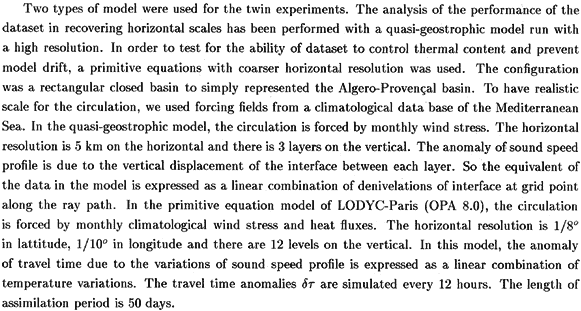
4 Results of twin experiments
The relation described by the model equation transfers information from the lengthscale of the observational sections to smaller scales, as it shown by the evolution of the error spectra (figure 2). The duration of the assimilation period has to be long enough for the processes involved in this transfer to act.
Figure 3: Time evolution of the rms difference between the result after assimilation and true state for the barotropic (plain line) and 1st baroclinic (dashed line) mode normalized by the initial difference before assimilation.
Although the baroclinic modes are constrained by the data, the batropic mode is also improved because of the non-linear Interactions between modes described by the model equations (figure 3). The improvement depends on the time within the assimilation period. The best result is obtained at the middle time. It is so because this is when the amount of information from past and future observations is maximum. Those results obtained in the quasi-geostrophic model show that the assimilation of tomographic observations is able to improve the model solution : information from those integral data can be transfered to smaller scales and other variables not directly constrained by the data.
In the primitive equations model, the“oceanic”context simulated to generate observations is different : the circulation is not so turbulent but a global bias in temperature exists between the truth and the first guess used to initialize the assimilation. The result clearly show the ability of simulated tomographic observations to correct this bias in temperature from subsurface to bottom layer (figure 5).